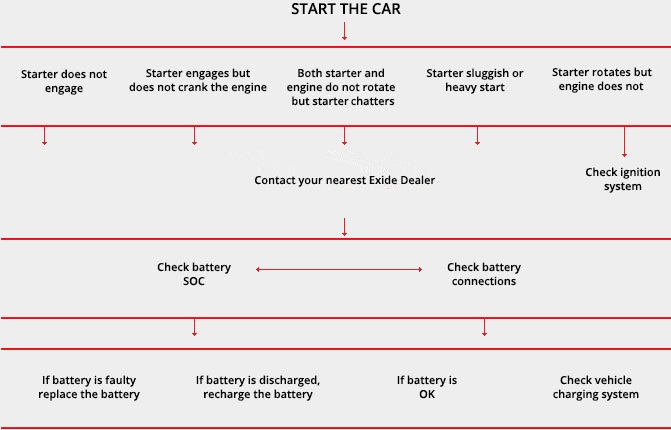الكاتب: almailem_group
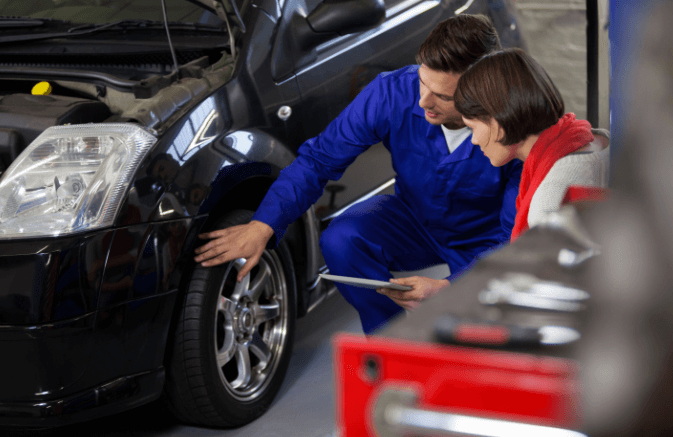
Types of Tires by Structure
Posted On13.05.2020To make your travel more enjoyable tires are categorized by vehicle type, structure, season, pattern, and various other special uses.
Bias Tire
Bias tires are used primarily for off-the-road, agricultural, and industrial vehicles.
Structure of a bias tire

The carcass of a bias tire has cords that alternate with one ply each in a crisscross angle formation. Thus, the angle of the alternating cords against the road surface is approximately 40 degrees on the circumference. Both carcass and belts are made out of nylon.
Deformation of tread during driving

Loads on tire or cornering while driving causes a deformation of tread, which makes heat-generation and uneven wear. However, bias tires have demands on Off-the-Road condition and Heavy vehicles.
Radial Tire
Radial tires are produced for passenger cars, light trucks, trucks, and buses.
Structure of a radial tire

The radial tire refers to a tire in which the cords are arranged perpendicular to its circumference. Due to this cord arrangement, the radial tire has a lower flatness ratio than the bias tire. Also due to its high horizontal resistance, the radial tire has superior starting, acceleration, controllability, rotationality and safety characteristics and is best suited for high-speed travel. Both carcass and belts are made out of steel.
Change in tire tread while driving

Despite changes in radial tire tread while driving, you will notice no change in the contact area between tread and road surface. The radial tire is often used for passenger cars. Its advantages are high rigidity of tread which makes cornering be stable and low rolling resistance.
Source: Hankook
MORE NEWS
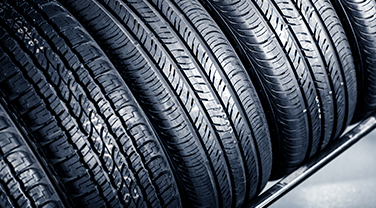
Passenger Tire Terminology
Posted On13.05.2020The selection criteria for tires change depending on the type of vehicle you own and your style of driving. Learn more about the terminology and meanings of various parts of a passenger tire!
Tire Section Width
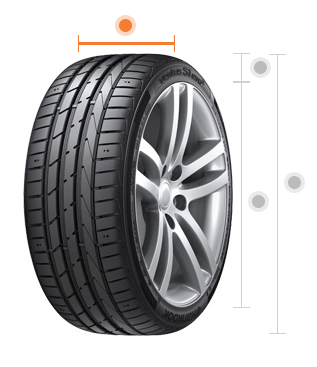
205/75 ZR15
Tire Section Width = Distance (mm) in a straight line between the sidewalls fitting to rim with standards air pressure and without loads.
Tire Section Height
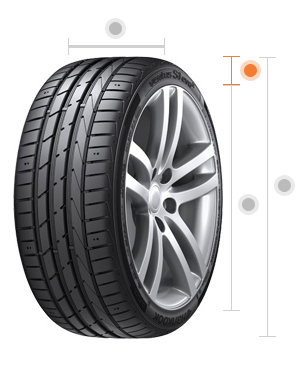
Tire Section Height = Half of a distance which is the difference between tire’s outer diameter and rim diameter.
Aspect Ratio
205/75 ZR15
The ratio of Section Height to Section Width.
* Aspect Ratio = (Section Height) / (Section Width) X 100
Rim Diameter
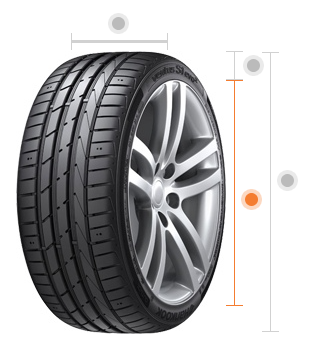
205/75 ZR 15
The distance (inch) between the rim bases in contact with the rim flange (almost identical to the tire’s interior diameter).
Tire Overall Diameter
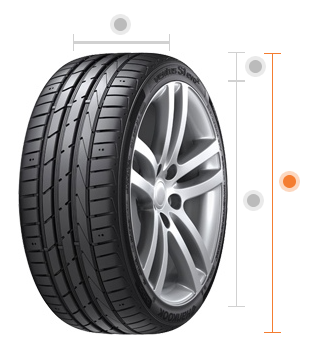
The outer diameter of tire fitting to rim with standards air pressure and without loads.
Source: Hankook
MORE NEWS
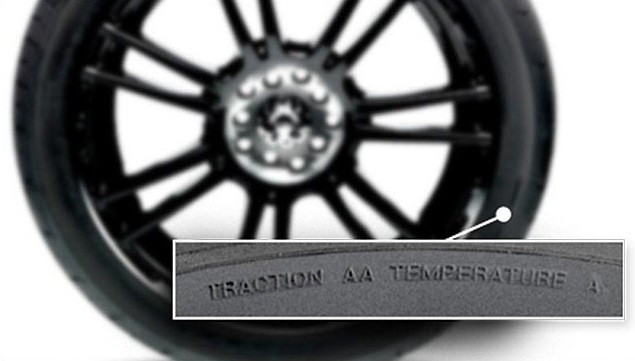
Tires-Reading a Sidewall
Posted On13.05.2020Treadwear, Traction, and Temperature Grades

Uniform Tire Quality Grading
The Uniform Tire Quality Grading System, or UTQG, is a system developed by the government designed to provide consumers with information on tire treadwear, traction, and operating temperature resistance.
Treadwear Rating
The treadwear grade is a comparative numerical rating based on the wear rate of the tire when tested under controlled conditions on a specified government test course. For example, a tire graded 200 would wear two times as well on the course as a tire graded 100. The relative performance of a tire depends upon the actual conditions of its use which may depart significantly from the test conditions due to variations in driving habits, service practices, and differences in road characteristics and climates.
Traction Rating
The UTQG Traction Rating indicates the tire’s ability to stop a vehicle moving straight forward on wet pavement. The ratings are AA, A, B, and C, with AA being the best.
Temperature Rating
The UTQG Temperature Rating indicates the tire’s ability to effectively dissipate heat. The ratings range from A to C, with A being the best.
*(UTQG treadwear goes in 20 point increments)
Air Pressure
With the right amount of air pressure, your tires will perform better, wear longer and save fuel. The “right amount” of air pressure for the original equipment or same size tires is specified by the vehicle manufacturer and may be different for front and rear tires. Check with your Nitto dealer if the replacement tires on your vehicle are no longer the same size as the O.E. tires.
U.S DOT Standard Saftey Code

The letters “DOT” certify compliance with all safety standards established by the U.S. Department of Transportation (DOT). This is followed by a combination of up to 12 numbers and letters.
The first two numbers or letters are the plant code where the tire was manufactured, and the last three to four numbers represent the week and year the tire was built.
Tires built in the 1990’s will have three numbers and may have a triangle to note the decade. Examples are below.
Note: Recently it became mandatory to apply a partial DOT serial number on the sidewall opposite the complete DOT serial number. The partial DOT serial does not show the week and year that the tire was manufactured, but may still assist consumers in identifying tires should a recall be necessary. The purpose in applying the partial DOT serial number was to facilitate tire identification when the full DOT serial number may have been mounted towards the inboard side of the vehicle, and consequently not visible unless the vehicle was put on a lift for inspection.
Tire Size, Load Index, and Speed Symbol

The sidewall of a tire includes a variety of important information. The numbers and letters identify dimensions and performance standards that allow you to compare tires more accurately and efficiently. This diagram will help you to understand those numbers and letters. For assistance in selecting a replacement tire, always consult your Nitto Tire dealer.
Section Width

The width of a tire is referred to as its section width. This is the width of an inflated tire in millimeters at its widest point from sidewall to sidewall.
Section Height
The section height of the tire is measured in millimeters also. The section height is approximately the distance from the rim to the tread surface of the tire when it is not carrying any weight.
Aspect Ratio
The aspect ratio is the dimensional relationship of the section height to the section width. The lower the aspect ratio, the shorter the sidewall and the wider the shoulder-to-shoulder width.
Radial
The “R” stands for “radial,” indicating the tire has radial construction.
This One is Easy!

The “20” indicates the diameter of the wheel in inches. You can learn more about changing the diameter of the wheels of your car in the Plus Sizing section.
Load Index

The load index number and speed symbol correspond to the maximum load-carrying capacity of the tire and its maximum speed capability.
The load index is an assigned number that corresponds with the load-carrying capacity of the tire. For example, “96” indicates a load-carrying capacity of 1565 lb at maximum inflation pressure. The load index for most passenger car tires ranges from 75-100. Click here to view the complete load inflation index.
Speed Symbol

Speed ratings are determined by indoor laboratory testing methods, which measure high-speed tire durability under controlled test conditions. These test procedures do not take into account underinflation, tire damage, vehicle characteristics or road conditions which can lead to sudden tire failure or loss of vehicle control at much lower speeds than indicated by the tire’s speed rating.
Speed ratings are determined by indoor laboratory testing methods, which measure high-speed tire durability under controlled test conditions. These test procedures do not take into account underinflation, tire damage, vehicle characteristics or road conditions which can lead to sudden tire failure or loss of vehicle control at much lower speeds than indicated by the tire’s speed rating.
Light Truck Tires

The “LT” designation stands for “Light Truck.” These tires are intended for more severe use often seen on trucks and follow load and inflation standards established by the Tire and Rim Association (TRA). Load Index values and load capacities for these tires can be found in TRA manuals.
About Air Pressure

With the right amount of air pressure, your tires will perform better, wear longer and save fuel. The “right amount” of air pressure for the original equipment or same size tires is specified by the vehicle manufacturer and may be different for front and rear tires. Check with your Nitto dealer if the replacement tires on your vehicle are no longer the same size as the O.E. tires.
Mud and Snow Designation

The “M+S” indicates the tire is designed for mud and snow applications. The Mud and Snow designation may also appear as “M&S” or “M/S.”
Source: Nitto
MORE NEWS

How to Jump Start a Vehicle
Posted On13.05.2020Vehicle Jump-Starting procedures as listed below should be followed carefully :
- Ensure that vehicle battery and battery for jump-starting have the same declared voltage (say 12V).
- Turn off all electrical loads, check vehicles – no part should be touching each other and gear should be in neutral position.
- Vehicles should have the same terminal earthed, if not,refer to manufacturers’ instructions. Make sure
that cables are not frayed or damaged.
Carry out the following steps in sequence:
- Connect the positive terminal of jump-starting battery to the positive terminal of the stalled car battery – on negative grounded system.
- Connect one end of the other cable to the negative (-) terminal of the booster battery.
- Connect the other cable away from the battery, to the engine block or car frame of the vehicle to be started.
- Make sure cables are away from fan blades and other moving vehicle parts.
- After starting, remove cables in reverse order, starting with one connected to engine block or car frame.
- If vehicle does not start within 30 seconds, call an auto electrician.
What to do when you face a starting problem?
- When the car engine turns well but does not start? Check the engine, carburettor, ignition system etc.
- The engine itself does not turn or turns very slowly? If the weather is cold, the engine may take the time to warm up. Be sure to check the grade of oil once. Or else, check your battery connection – in case of any problem, contact your nearest Exide dealer or Bat Mobile Service. Replace your vehicle battery, if it is faulty or recharge if it is low on charge and check fan belt and alternator output. Don’t forget to test operating conditions. However, if battery function is smooth, check the starter motor and its connections.
MORE NEWS

Road Trip Essentials for Your Vehicle
Posted On13.05.2020When planning a road trip, it’s essential to first think of what preventive steps you can take to ensure your vehicle is ready for the long haul. Many precautionary steps, such as checking tire pressure and tread, fluid and oil levels, wiper blades, belts and headlights, can be done at home at little-to-no cost.
However, if you’d like your vehicle checked by an experienced professional before your trip, consider stopping by a local Goodyear Auto Service for a 29-Point Inspection, which includes checks on tires, fluids, brakes and an under-the-hood inspection. If you experience a flat tire on your road trip, Goodyear Auto Service also offers Free Flat Repair nationwide –if you’ve got a tire that’s flat, punctured or losing pressure, our technicians will repair your tire for free as long as the tire doesn’t need to be replaced.
In case it’s too late for extensive preventive maintenance and you’re just in need of quick tips to get your car road-trip ready, consider taking it to the car wash for a deep clean, topping off necessary fluids, checking and changing the oil, if needed, and making sure tire treads and pressure are still in good shape. Other steps include:

Keep tires inflated, but do so properly. As temperatures rise during the summer, so can your tire pressure. Tires with high or low air pressure perform inefficiently compared to properly inflated tires. Check your tires before and after a summer road trip, using the inflation recommendations typically found in the driver side door frame or in your vehicle owner’s manual as a guide. To properly check tire inflation pressure make sure the tires are cold, meaning they’ve been idled in a shaded area for at least three hours. Never “bleed” or reduce inflation pressure when the tires are hot, as this can result in an under-inflated condition when the tires cool. Learn more about How to Inflate Tires and the importance of proper tire pressure.

Don’t overlook tread depth. Maintaining proper tire tread depth is an easy way to help maximize safety and performance. There are several ways to check tread depth, including the “penny test.” Simply insert a penny into your tire’s tread groove with Lincoln’s head upside down, facing you. If you can see all of Lincoln’s head, it’s time to replace your tires.

Test or replace the battery. Battery failure is the No. 1 cause of car breakdowns. Often, batteries give slight warning signs when they run low. For example, you may notice the engine struggling to turn over upon ignition or some of your dashboard warning lights staying on. While a typical battery life is about four-and-a-half years, each day of extreme weather – both hot and cold – contributes to the shortening of a battery’s life. It’s a good idea to have your battery tested by a trained professional during peak seasons to determine whether it’s time for a replacement.

Check critical fluids. Don’t get caught without improper levels of windshield, brake, power steering or transmission fluid for a long summer road trip.
If you notice more concerning issues, such as grinding and overheating, take your car into a local shop to have it inspected by a professional.
MORE NEWS
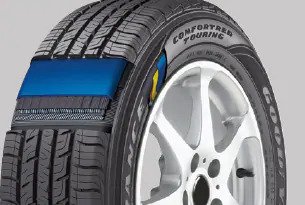
Tires-Load Index & Speed Rating
Posted On12.05.2020Tire Specs
The Science Behind Your Drive
Learn more about important specifications like speed rating and load index.

Speed Rating
Tire speed rating tells you the maximum service speed for a tire. A speed rating isn’t, however, a recommendation to exceed speed limits, and doesn’t indicate how well a tire handles or corners.
Generally, it is recommended that a speed-rated tire be replaced with a tire having an equivalent or greater speed rating. For example, if the recommended speed rating is a V, it’s suggested that you replace it with a V, W, Y, or Z.
It is not recommended to fit tires with different speed ratings. If tires with different speed ratings are installed on a vehicle, they should be installed with like pairs on the same axle. The speed capability of the vehicle will become limited to that of the lowest speed rated tires. Obey all speed limits.
Tire Speed Rating Chart
| Service description speed symbol | Q | R | S | T | U | H | V | W* | Y* |
(Y)**
|
|
| Maximum speed (MPH) | 99 | 106 | 112 | 118 | 124 | 130 | 149 | Above 149 | 168 | 186 |
Above 186
|
| Size speed symbol | ZR | ZR |
|
* W- and Y-speed ratings are subcategories of the Z-speed rating.
** Per the TR&A 2007 yearbook, for tires having a maximum speed capability above 240 km/h (149 mph), a ZR may appear in the size designation. For tires having a maximum speed capacity above 300 km/h (186 mph), a ZR must appear in the size designation and a service description, including the Y speed symbol, must be included in brackets.
Load Index
Tire load index is an assigned number that corresponds to the maximum weight that a tire can support when properly inflated. The higher the tire’s load index number, the greater its load carrying capacity. Choosing a tire with a lower load index than the original equipment specifications means that the tire will not carry the load capacity of the original.
Most passenger-car tire load indexes range from 75 to 100, but some are higher. The chart shows how load indexes translate to weight.
Tire Load Index Chart
| Load Index | Load (lbs) |
|---|---|
| 89 | 1279 |
| 90 | 1323 |
| 91 | 1356 |
| 92 | 1389 |
| 93 | 1433 |
| 94 | 1477 |
| 95 | 1521 |
| 96 | 1565 |
| 97 | 1609 |
| 98 | 1653 |
| 99 | 1709 |
| 100 | 1764 |
| 101 | 1819 |
| 102 | 1874 |
| Load Index | Load (lbs) |
|---|---|
| 117 | 2833 |
| 118 | 2910 |
| 119 | 2998 |
| 120 | 3086 |
| Load Index | Load (lbs) |
|---|---|
| 103 | 1929 |
| 104 | 1984 |
| 105 | 2039 |
| 106 | 2094 |
| 107 | 2149 |
| 108 | 2205 |
| 109 | 2271 |
| 110 | 2337 |
| 111 | 2403 |
| 112 | 2469 |
| 113 | 2535 |
| 114 | 2601 |
| 115 | 2679 |
| 116 | 2756 |
| Load Index | Load (lbs) |
|---|---|
| 75 | 852 |
| 76 | 882 |
| 77 | 908 |
| 78 | 937 |
| 79 | 963 |
| 80 | 992 |
| 81 | 1019 |
| 82 | 1047 |
| 83 | 1074 |
| 84 | 1102 |
| 85 | 1135 |
| 86 | 1168 |
| 87 | 1201 |
| 88 | 1235 |
SideWall
Not all sidewalls are built the same. Check out the different types of sidewall styles that we offer below.
Black
A black sidewall with black lettering.
Whitewall
White bands on the sidewall vary in width.
Outlined Letters
Letters on the sidewall are outlined in white.
Source : Good Year
MORE NEWS
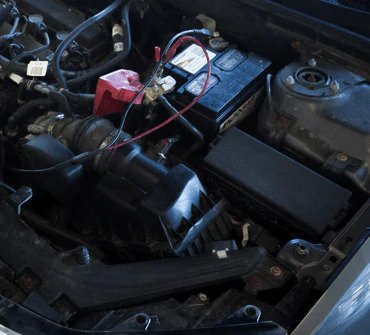
The Warning Signs of a Dying Car Battery
Posted On12.05.2020Oh, the dreaded feeling of helplessness when you turn the key in the ignition and hear nothing. Your battery is dead, and you’re stranded wherever you happened to be parked.
Don’t let it happen to you. The first step is knowing when to replace your battery. We’ve compiled tips from our experts on car battery life and how to tell if it’s time for a replacement.
Car battery basics
The average battery has a lifespan of four and a half years, but it’s wise to check yours every six months.
Prevention is key when it comes to car maintenance, so it’s important to keep an eye out for battery corrosion. How will you know if corrosion is taking a toll? Your battery terminals will look like a science experiment. White, blue, or orange fuzz forming around the battery may indicate that its connection is about to fail.
Signs of imminent car battery failure
There are a variety of signs, both internal and external, that point to battery/charging/starting system failure.
Slow-starting or slow cranking car
If you notice the engine struggling to turn over upon ignition, there’s a good chance that your battery is on its last legs.
Indicator lights have illuminated
Check the dashboard when you get into your car. Your car’s charging system depends on the battery, so a light may come on when it’s time to have it replaced.
Your car’s operating system is often connected in surprising ways. You often have very little time to act before a car battery gives out. If you notice any of these signs, bring your car into a Goodyear Auto Service Center as soon as possible for an inspection by our experts.
Source :Good Year
MORE NEWS
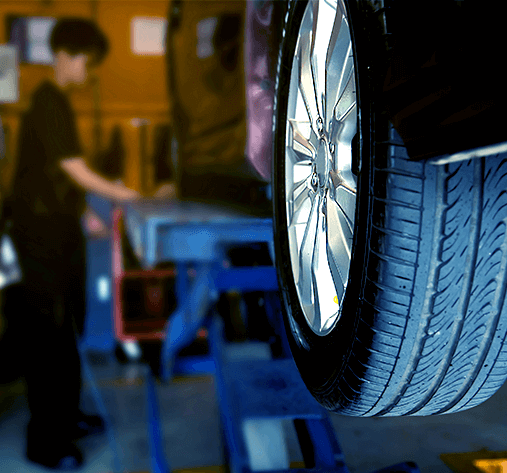
How to Read a Tire Size
Posted On12.05.2020What’s On Your Tire’s Sidewall?
Tire Type
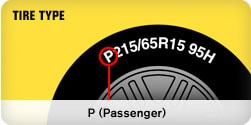
The letter “P” at the beginning of the “Tire Size” tells us the tire is a P-Metric tire, referring to tires made to certain standards within the United States, intended for Passenger vehicles.
If a tire size has no letters at the beginning, this indicates a Euro metric tire. P-Metric and Euro-Metric tires may have different load capacities.
The letters “LT,” either at the beginning or at the end of the tire size indicate the tire was designed for light trucks. Vehicle manufacturers equip some light trucks with “LT” type tires. These tires generally require higher inflation pressures than passenger tires.
Consult your owner’s manual or tire placard for the recommended tire size and inflation pressure for your vehicle.
Tire Width
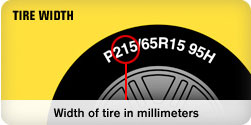
Aspect Ratio

Construction

Wheel Diameter
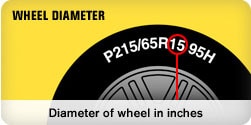
Load Index
Speed Rating
DOT Symbol
Tire Identification Number
UTQG
Stands for Uniform Tire Quality Grading, a rating system developed by the U.S. Department of Transportation to provide consumers with information to help them purchase tires based on their relative treadwear, traction and temperature capabilities.
Traction grades indicate the wet traction of a tire under a controlled test. A tire with an “AA” rating offers outstanding traction in wet conditions.
| Traction Grades |
|---|
| AA |
| A |
| B |
| C |
Temperature grades indicate the ability of the tire to withstand and dissipate destructive heat. A tire with a higher temperature grade is able to operate at higher speeds.
| Temperature Grades | Speeds in mph |
|---|---|
| A | Over 115 |
| B | Between 100 and 115 |
| C | Between 85 and 100 |
Treadwear grades are based on standardized government tests to help predict the expected treadwear of a tire. For example, a tire with a treadwear grade of 200 should last twice as long as a tire with a treadwear grade of 100.
Source : Good Year
MORE NEWS
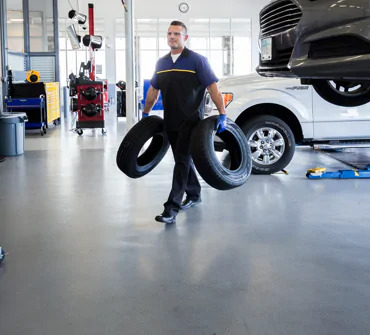
Tire Maintenance
Posted On12.05.2020Routine tire maintenance might not sound exciting at first, but in practice, it means less money spent on tire replacements over time, better performance and fuel efficiency, and greater driving confidence. So you can spend more money and time on what matters.
When you think about all the places your tires will take you, it’s pretty exciting. Tire maintenance routines like the ones outlined below can help you get the most mileage from your investment.
Wheel Balance
They say balance is the key to a happy life, and if your tires could speak, they’d surely agree. If you’re due for a wheel balance stop in and let us check your wheel balance.
A wheel balance consists of small weights placed around the wheel to help balance the tire and wheel assembly. Balancing your wheels helps prevent uneven tire wear and minimizes wheel vibration. Balancing is performed anytime you put new tires on your car and should be performed every 6,000 miles or as recommended by your vehicle manufacturer.
An unbalanced tire can cause premature wear of the tire and damage to the strut and shock. It can also lead to wheel vibration, poor handling, and excessive noise while driving. Have your tires balance checked at your Goodyear Auto Service if you notice any of these symptoms.
Tire Rotation
Sometimes you need a change of scenery. And sometimes, your tires do, too. Help your tires last longer with a visit to us and let one of our trusted technicians help ensure you’re getting the most from your tire investment.
Rotating the position of each tire helps equalize tread wear and maximize the life of your tires. If your tires aren’t rotated regularly, they may need tobe replaced prematurely. Front tires tend to wear faster than rear tires on front wheel drive vehicles due to added pressure/resistance from steering.
Plan to have your tires rotated every 6,000 miles.
Tire Repair
Properly repairing a tire that has deflated or is losing air because it has picked up a nail, screw or sharp object is critical. Some tires may be repaired if they continually lose air or have a puncture in the tread area.
Tire repairs need to be performed correctly in accordance with strict industry standards. Before any repair, a service professional must properly inspect the tire by removing it from the wheel and inspect the outside and inside to determine the extent of the damage and to determine if the tire can be repaired.
When a tire can be repaired, Goodyear Auto Service performs a complete repair by using a tire repair plug and patch combination. Once completed, the technicians will rebalance the tire and rim and reset the tire pressure monitoring system (TPMS), if applicable.
Source : Good Year
MORE NEWS
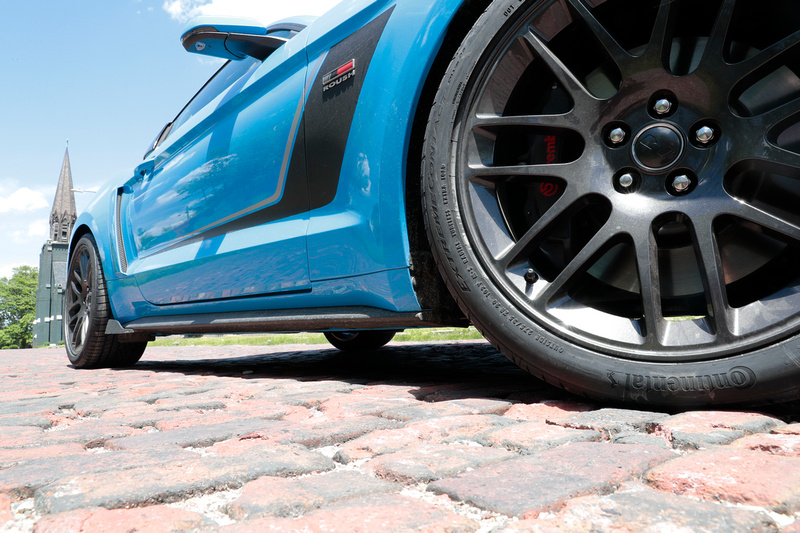
When Is It Time To Replace My Tires?
Posted On12.05.2020The lifespan of a tire depends on a combination of influences including: the driver’s driving habits, climate, road conditions, tire design, and proper tire maintenance.
The big three things to consider are:
Tread Wear
Proper tread depth is essential to prevent hydroplaning and skidding. The minimum tread depth is 2/32” of an inch (1.6 mm).
Some Continental tires are equipped with a DWS molded into the tire tread which indicates when the tire’s tread has worn. When the S is worn away, the tire is no longer optimal in snow. When the W is worn away, the tire is no longer optimal in wet. And when the D is worn away, the tire is no longer optimal in the dry and the tire should be replaced.
If your tires don’t include DWS, you can use a penny to check tread depth. Simply place the penny upside down into a tread groove. If you can see all of Lincoln’s head, it’s time for a new tire.
Climate
Too much exposure to direct sunlight, UV rays, and/or heat, can cause cracking in your tires. If the vehicle is parked outside in the elements, and is not driven frequently, this can accelerate the process. Extreme cold can also factor into tire wear.
Tire Age
Tires are designed and built to provide many thousands of miles of excellent service. For maximum benefit, tires must be maintained properly. The service life of a tire is a cumulative function of the storage, rotation, and service conditions, which a tire is subjected to throughout its life (load, speed, inflation pressure, road hazard injury, etc.).
Continental Tire recommends that you regularly inspect your tires. An inspection of the tires should be incorporated during routine vehicle maintenance procedures. If tire damage is suspected or found, it should be carefully assessed by a trained tire specialist immediately.
Source:Continental Tires
